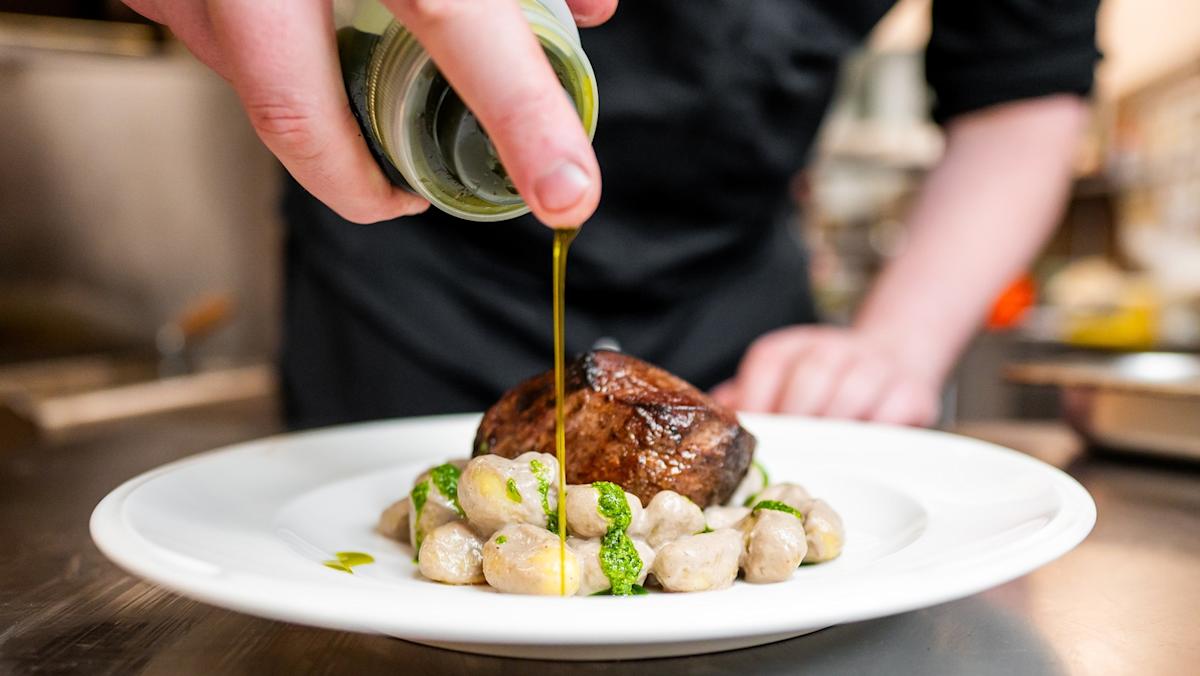
How Italian Restaurants Pick The Perfect Olive Oil For Every Dish
How did your country report this? Share your view in the comments.
Diverging Reports Breakdown
How Italian Restaurants Pick The Perfect Olive Oil For Every Dish
Olive oil doesn’t stay at its best forever, and the way you store olive oil can make all the difference in helping it last longer. When looking for a high-quality extra-virgin olive oil (EVOO), chefs aim for low acidity, typically below 0.8%. Milder EVOOs are a good fit for cooking, while bold oils are a great fit for drizzling over salads, seafood, or vegetables to add flavor depth. To stop olive oil from becoming rancid and bitter, store it in a dark glass bottle in a cool, dark place. If you get a whiff that’s musty or greasy, it’s likely time to toss your old oil and open up a new bottle.Read the original article on Chowhound. Follow us on Twitter @Chowhound and @CNNOpinion.
Yahoo is using AI to generate takeaways from this article. This means the info may not always match what’s in the article. Reporting mistakes helps us improve the experience.
Yahoo is using AI to generate takeaways from this article. This means the info may not always match what’s in the article. Reporting mistakes helps us improve the experience. Generate Key Takeaways
From the aromatic olive oil that’s presented with your bread bowl to the finishing oil that glistens on top of your pasta, it’s clear that Italian restaurants know what they’re doing when choosing the perfect olive oil for every bite. Chowhound talked exclusively with Patricia Vega, the executive chef at Brooklyn-based Jr & Son, to learn how the restaurant manages to get the olive oil pairing just right with each and every dish.
Vega says that there are a few different factors to consider when choosing olive oils: origin, acidity, and the oil’s flavor profile. “Italian olive oils from regions like Tuscany, Liguria, and Sicily have distinct flavor profiles. For example, Tuscan oils are peppery and robust, while Sicilian oils are often fruiter,” she says. Just as oils from different regions of Italy take on different flavor profiles, olive oils from different countries taste different from one another as well. When looking for a high-quality extra-virgin olive oil (EVOO), chefs aim for low acidity, typically below 0.8%. This offers a fresh, balanced taste.
Vega also recommends considering how oil flavor profiles meld with the dishes being prepared. “Spicy, grassy, buttery, or fruity — flavor is key depending on whether the oil will complement bread, drizzle over vegetables, or dress pasta.” She typically sticks with aromatic and fruity EVOOs to accompany bread baskets, as these oils are meant to be savored. Milder EVOOs are a good fit for cooking, while bold oils are a great fit for drizzling over salads, seafood, or vegetables to add flavor depth before serving.
Advertisement Advertisement
Advertisement Advertisement
Read more: The 10 Best Places To Get Italian Beef In Chicago
Buying, Using, And Storing Olive Oil For Your Kitchen: Do’s And Don’ts
Bottle of olive oil, olive leaves, and olives on wooden outdoor table – sebra/Shutterstock
Following pro tips for buying olive oil can make all the difference in elevating the dishes you create in your kitchen. When you’re cooking, chef Patricia Vega recommends choosing “a milder extra virgin olive oil or even pure olive oil. These oils are less expensive and better for sautéing or roasting.” When it comes to dipping and finishing oils, however, she suggests splurging. “Use a high-quality EVOO, preferably cold-pressed and from a single origin if possible. Look for tasting notes that match your dish — fruitier for salads, peppery for meats, buttery for pasta.” Vega also mentions that you’ll want to stick to stronger-tasting oils for red sauces and meats, and lighter tasting oils for vegetables, fish, and desserts.
Olive oil doesn’t stay at its best forever, and the way you store olive oil can make all the difference in helping it last longer. To stop olive oil from becoming rancid and bitter, store it in a dark glass bottle in a cool, dark place. Vega says that olive oil typically oxidizes in a few months, so it’s smart to choose smaller quantities for your home kitchen (even though professional chefs love stocking up on gallons of beloved Corto boxed olive oil). If you’re not sure whether your olive oil is still good, you should be able to tell by the smell. If you get a whiff that’s musty or greasy, it’s likely time to toss your old oil and open up a new bottle.
Read the original article on Chowhound.
Source: https://www.yahoo.com/lifestyle/italian-restaurants-pick-perfect-olive-163500671.html
